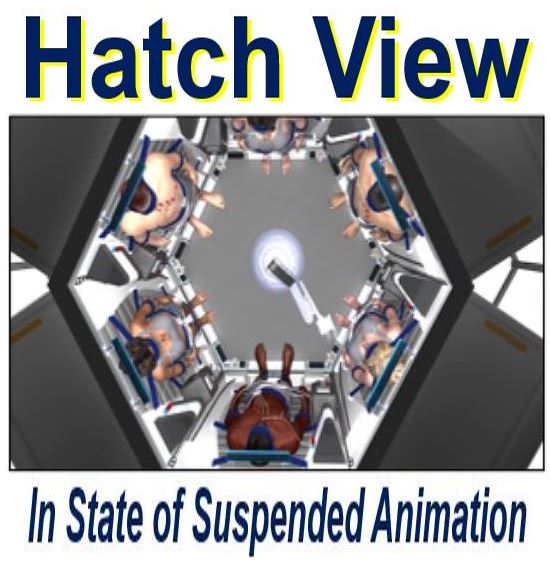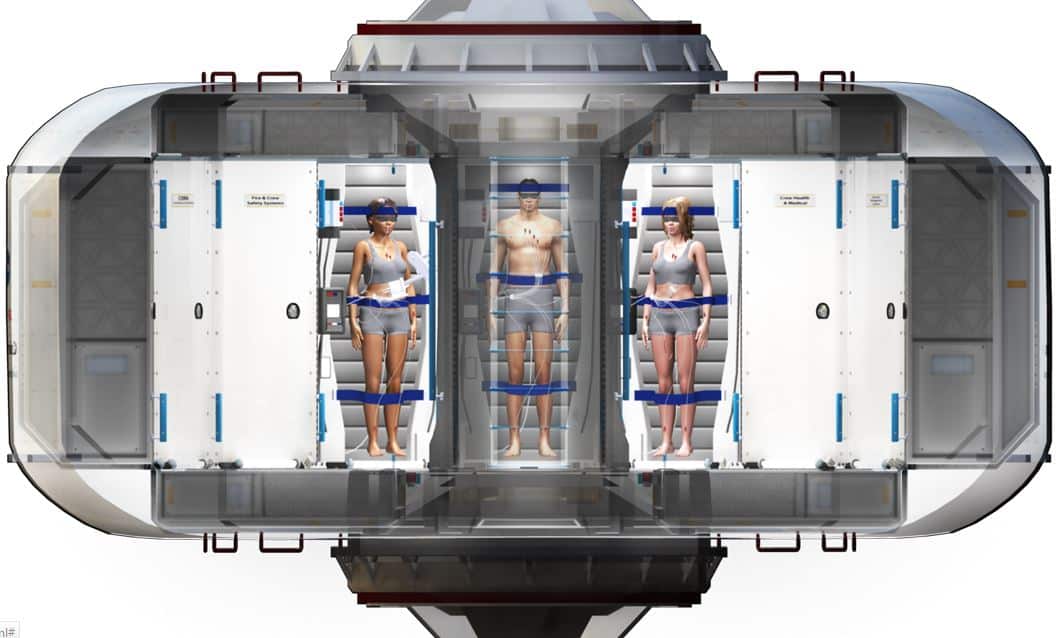NASA is looking into cryosleep for astronauts on long missions, using helicopters on Mars, and farming on the other planets, so that settlers can produce their own food locally. As the first human mission to Mars is rapidly becoming a reality and space agencies across the world look into distant space travel, resources are being channeled into new technologies.
Cryosleep is a process in which a human space traveler is put into a state of suspended animation using either a special chamber, something extremely cold, or a drug. Science-fiction enthusiasts are familiar with the technology, which for the moment, remains in the realms of fantasy.
Several sci-fi movies, such as Avatar, Aliens, Halo, and the Riddick tetralogy have people who would sleep in a cryogenic chamber when entering deep space or having to remain motionless or in a restricted environment for a long time.
 The astronauts will be placed in a state of suspended animation, and woken up just before arriving at their destination. Who, what or how they would be woken up remains to be seen. (Image: nasa.gov. Credit: J. Bradford)
The astronauts will be placed in a state of suspended animation, and woken up just before arriving at their destination. Who, what or how they would be woken up remains to be seen. (Image: nasa.gov. Credit: J. Bradford)
NASA Innovative Advanced Concepts programme
NASA now wants to make this a reality for its astronauts through its NIAC (NASA Innovative Advanced Concepts) programme.
The US space agency says that eight fundamental research concepts are to move into developmental stages. Half-a-million dollars will be awarded by its NIAC programme to each concept for two years of study – during which the new technologies will be tested.
One of the projects is to create special chambers or habitats where cryosleep is induced – specifically for long-duration missions. There are also plans to create a robotic space habitat that is self-sufficient and can grow while orbiting the Moon.
Advanced habitat system for Mars missions
SpaceWorks Engineering Inc. proposes the development of an ultra-advanced habitat system for transporting humans between Earth and Mars.
 A technology that has been a purely sci-fi notion could soon become reality, says NASA. (Image: nasa.gov. Credit: J. Bradford)
A technology that has been a purely sci-fi notion could soon become reality, says NASA. (Image: nasa.gov. Credit: J. Bradford)
“This new and innovative habitat design is capable of cycling the crew through inactive, non-cryonic torpor sleep states for the duration of the inspace mission segments. Under this effort, SpaceWorks will (i) Expand the Phase I medical team to address key challenges identified in the initial effort, (ii) Examine key habitat engineering aspects to further explore and refine design and identify further potential performance gains, (iii) initiate validation studies with leading medical researchers to understand the effects of prolonged hypothermia, and (iv) Consider the technology’s impact on alternate exploration missions (Mars moons, asteroid belt, Jovian and Saturn system, etc.).”
 According to yourdictionary.com, cryosleep is: “A deep sleep during which the body is stored at very cold temperature, to preserve it; cryogenic sleep.” The body may also be placed in a state of suspended animation using drugs or a special chamber. (Image: sei.aero/gallery/index.shtml)
According to yourdictionary.com, cryosleep is: “A deep sleep during which the body is stored at very cold temperature, to preserve it; cryogenic sleep.” The body may also be placed in a state of suspended animation using drugs or a special chamber. (Image: sei.aero/gallery/index.shtml)
Steve Jurczyk, an associate administrator at NASA’s Space Technology Mission Directorate, said regarding the NIAC programme:
“The NIAC programme is one of the ways NASA engages the U.S. scientific and engineering communities, including agency civil servants, by challenging them to come up with some of the most visionary aerospace concepts. This year’s Phase II fellows have clearly met this challenge.”
